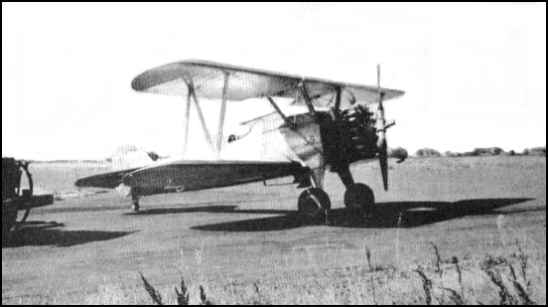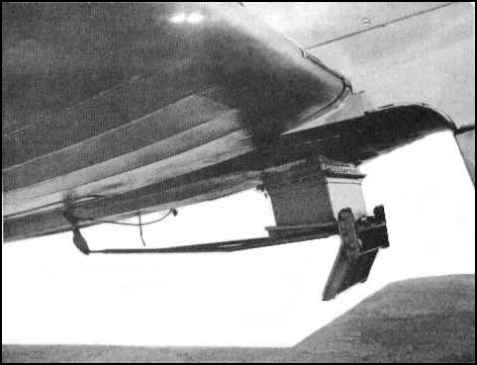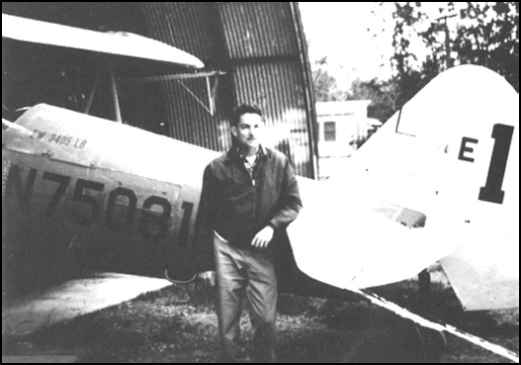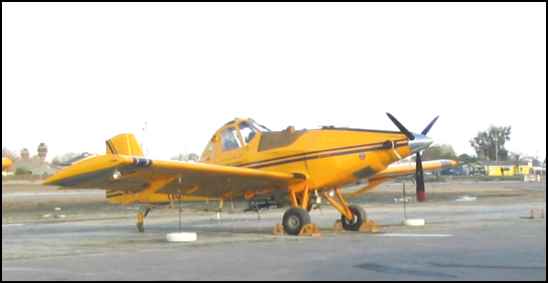
 |
| Joe Ely Fire Control Officer |
Lee Sherwood Air Attack Pilot |
|
In 1956, seven agricultural aircraft were modified and formed the first operational air tanker squadron in the United States. Piloted by local aviators, this squadron operated out of the Willows Airport fighting wildfires throughout California. In 1959, heavy air tankers, capable of carrying 2,000 gallons of fire retardant, were providing an effective tool in controlling wildfires. Aircraft having a retardant capacity of 3,000 gallons have contributed to successful wildfire control throughout the United States. From the collection of Irene Nolta, Vance Nolta's widow. Courtesy of George Nolta, 3-22-04 |
 |
|
Courtesy of George Nolta, 3-30-04 |
 |
|
|
 |
|
Initially, plain water was used as the fire suppressant. However, it was soon discovered that most of the water evaporated before reaching the fire, so the practice was adopted of adding chemicals to the water to inhibit evaporation. Borate was one of the first chemicals used, hence the derivation of the term "borate bomber." Courtesy of George Nolta, 3-22-04 |
|
By: Joe Ely U.S. Forest Service As far as I was concerned, aerial fire control tankers began at the North Zone fire control meeting in Redding in the spring of 1955, when Forest Supervisor Bob Dasmann gave me permission to go ahead with the project. During the month of June, I kicked the idea around with some of the local ag pilots and then I spent the first two weeks in July on fires down in Arizona. Soon after returning, I went to see (the late) Floyd (Speed) Nolta, a pioneer in agricultural aviation as early as the twenties. Pointing out that he had had much experience in agricultural spraying and seeding, did he think he could drop water on a forest fire? The only thing I could tell him was that I didn't think a spray boom would put it out fast enough. He said to come back in a week. A week later, being busy at something else myself, I asked (the late) Al Edwards to go out to Nolta's airstrip. Floyd had cut a hole in the bottom of a Stearman biplane, added a gate with hinges and a snag and pull-rope, and filled the thing with water. His brother (the late) Vance Nolta took it up, Al and Floyd lit the dry grass along the airstrip, Vance came over low and pulled the rope, and put out the fire. We were in business. It was July 23, 1955. On August 13, 1955, a crew was building handline in the brush on the lower side of the Mendenhall fire on the west side of Bald Mountain on Jack Weddle's Covelo District. They heard a plane coming in close and looked up just in time to see a load of water come down upon them and the edge of the fire. It was the first free-fall drop ever made on a forest fire. Vance was the pilot and he went back to Gravelly Valley, where the Ukiah Pine water tanker filled him up again. After several more drops on this fire, Dispatcher Lafferty sent Vance over to a fire that had just started on Bill Jones' District at the John David Place. Subsequently, Ranger Weddle reported: "My firefighters found it to be a big assist in knocking down hotspots." And Ranger Jones: "It was a real help to the men. It cooled her down and they were able to get in on a hot corner which was about to spread up a hill." This one little plane probably wasn't really all that good and we all knew it. But I guess it's kind of like your kids when they do something good and you tell them they are wonderful, they will be. And so it happened. The local paper headlines: "Local Agricultural Aircraft used in Fighting Forest Fire." Then an editorial entitled: "Aerial Firewagon Vital Development", which suggested: "It doesn't seem too visionary to believer that the day may not be too far distant when a squadron of the planes will be ready for duty…". And sure enough, that's what happened. The local pilots were the last of the silk scarf and leather helmet boys and they would try anything. But they had families and needed income. If they would cut out a hole in the bottom of their ag plane and put in a gate, would I get them some kind of standby money and also pay them to fight fire? I knew I could use fire-fighting funds and the next winter I went down to San Francisco and got the standby money ($4,000). The next summer we had seven biplane air tankers ready to go: the one original Stearman (#75081 – other wise known as number one) and six N3N's. We had eight pilots: Floyd Nolta, Dale Nolta, Vance Nolta, and Harold Hendrickson (all deceased) and L.H. McDurley, Ray Varney, Warren Bullock, and Frank Prentice. We also had a "Birddog" Tri-Pacer, piloted by Lee Sherwood. A Forest officer rode this ship to direct the air tankers and correlate with ground attack. Enthusiasm spread. We got word to all State and Federal forestry units in California that the ships were available, that anybody could get them by calling Willows 80 (Dispatcher Charlie Lafferty) and here's how to order, operate, and pay for the planes. Then the phones began to ring. The squad went out on twelve fires in their first month and the following summer (1957) and they were all over California. I don't believer we even used that $4,000 standby money the first year. There were so busy fighting forest fires that there wasn't much standby. CDF and Forest Service used them, in addition to our own local fire attack. In 1957 we got some more planes and pilots: Frank Michaud, Gene Ellan, Neal Wade, and George Jess. George was killed on a State fire, down in Lake County, I think. In 1957 or 1958, Floyd Nolta put a Twin Beech into the squad. Within a few years, we began to get PBY's, F7F's, and other larger planes. They were a big improvement – a thousand gallons is ten times better than hundred. But it was the eight original pilots, and their seven little planes that blazed the original trail. Communications was a problem at first. Then one time the pilots came back from a Six Rivers dispatch all fired up: "Hey, Joe, those boys up there had a good system. They gave us each a map of the fire, divided into three parts and labeled A, B, and C. Then when we came in to refill, a fella would hold up a card with a big B on it. Then we would drop on B." Later, we got radios in the planes. There was some pilot dissension about the Forest Service rule requiring 75-foot clearance above the treetops. My boys preferred five feet and they made some pretty impassioned speeches to me on this subject. As I said, it was the enthusiasm of everybody that made the thing work. Naturally – and fortunately – no one forest like the Mendocino would have enough fires to support the squad. The more enthusiastic rangers ringing Willows 80, the more air tankers we could support, and the more fires we could help control. And the CDF doubled our clientele. Charley Columbro headed up the CDF part of the program – out of Santa Rosa. He and I correlated State and Federal procedures and activity in work, timekeeping, pay, and everything about the air tankers. As I said, the 1955 drops were plain water. However, we soon found, by some joint testing with CDF and the Experiment Station, that on a hot, dry summer day, if you drop 100 gallons at 50 feet, none of it gets to the ground. We solved the problem by mixing a slurry of water and sodium calcium borate, and the planes were called borate bombers for several years. Then we went to bentonite, which was almost as durable and much lighter. Finally, Firetrol, which was best. In passing, we tried jello and some other things. But we were having a hard time mixing the stuff. We had little jet-type mixers and they were awful slow – even for the small amounts our planes carried. Then one day Pilot Hendrickson same in to see me about the mixing. "Joe", he said, "there is a guy up in Orland that can invent anything, and will. Take your problem to Wim Lely." So I did. Wim promptly developed a unit that would mix a thousand or so gallons and pump it into a big airplane, all in couple of minutes or so. He built these machines and would either sell them to a forestry unit or set them up and operate them, if desired, at a rate per gallon of material in the planes. Without Wim Lely, our air tanker program would have fizzled. Author: Joe Ely, Camp Sherman, Oregon July 27, 1981 Courtesy of George Nolta, 3-22-04 |
 |
| Staff Photo/Susan Meeker |
|
Colusa County Sun Herald, October, 2003 Supplement to Tri-County Newspapers |
|
|
|
By Charles A. Martin |
 |
|
|
 |
|
|


|